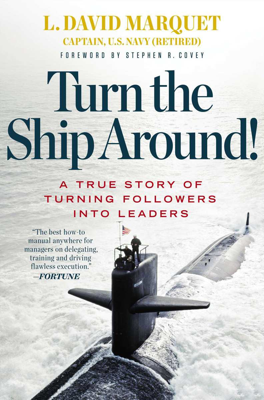“I Relieve You!”
Command Accountability and Preparation
On January 8, 1999, David Marquet assumed command of the USS Santa Fe at the Submarine Base in Pearl Harbor, with a keen awareness of the daunting responsibilities awaiting him: - Absolute Responsibility: As specified by U.S. Navy Regulations, the commanding officer holds absolute accountability for the command's safety, efficiency, and well-being. Any incident post-command transition becomes the responsibility of the CO, highlighting an obligation that does not extend to predecessors. - Limited Incentive for Long-Term Excellence: The naval structure encourages commanding officers to maximize performance during their specific tenure rather than developing sustainable mechanisms for continued excellence beyond their immediate tour.
Observational Insights and Initial Reflections
David Marquet evaluated the state of the Santa Fe and its crew: - Crew’s Desire for Change: Recognizing past inadequacies, the crew expressed a pronounced readiness for change in leadership and operational approach to break from previous frustrations and mediocre results. - Supportive Chain of Command: Commodore Mark Kenny and Rear Admiral Al Konetzni provided substantial support, allowing Marquet the autonomy to innovate without micromanagement, focused solely on outcomes such as performance and morale improvements. - Inadvertent Benefit of CO’s Technical Limitations: Marquet acknowledged that his limited technical knowledge of the Santa Fe prevented him from reverting to conventional top-down methods, forcing him to rely heavily on crew expertise.
Shift in Leadership Focus: Achieving Excellence over Avoiding Errors
Marquet identified the need to transform the Santa Fe's operational philosophy from a focus on error avoidance to striving for excellence: - Cultural Preoccupation with Errors: Traditionally, operations focused intensely on tracking and analyzing errors, which inadvertently led to a cautious, risk-averse mindset among the crew. - New Objective: Emphasizing excellence over mere error reduction, Marquet intended to pivot the crew’s mindset towards exceptional operational effectiveness, thereby fostering positive engagement and innovation.
Mechanisms for Clarity and Reflection Questions
The approach aimed at creating a culture where the crew would actively seek to excel rather than merely avoid errors: - Mechanism Introduced: "Achieve Excellence, Don’t Just Avoid Errors" was established as a mechanism for fostering clarity and elevating the crew's motivation and operational standards. - Reflective Questions: The chapter concludes with several questions intended to provoke readers to evaluate their own organizational cultures regarding error avoidance vs. excellence pursuit, the impact of error-focused evaluations on initiative and risk-taking, and ways to balance minimizing errors without overshadowing organizational goals.
Conclusion
Marquet’s leadership tenure began with a resolute commitment to transforming the operational culture of the USS Santa Fe, aiming to motivate the crew towards a legacy of excellence in line with the rich history of the submarine force.
